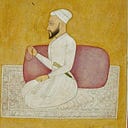For this post I decided to look at how the Muslim population in the state of Jammu and Kashmir was affected by partition. For the pre-partition source I used the 1931 British Census, mostly because unlike the 1941 census, it has demographic figures available at the more detailed tehsil level. For post-partition I used the 2011 Indian census. I also split the display into Indian and Pakistani administered regions of Kashmir, while slightly modifying the tehsil borders so we would be comparing the same distinct regions across both time periods. Lastly, I labeled the 2011 maps with those tehsils that saw major demographic shifts.
I’ll start with the most striking change; the lower Jammu region of Indian Kashmir. Before partition these tehsils were between 30–50% Muslim, with the Bhimber tehsil being majority Muslim. Today this region is only around 5% Muslim. The primary cause of this demographic swing was the infamous “Jammu Massacre”, where according to some sources nearly 250,000 Muslims were, “systematically exterminated” by the forces of the Hindu ruler of the state, Hary Singh. These depredations would prove to be the spark for the first India-Pakistan war.
On the Pakistani side of Kashmir the demographic changes were relatively minor, with only the Bhimber tehsil seeing a major shift (going from roughly 65% Muslim to nearly 100%). It should be noted however that what Pakistan lacked in magnitude, it made up for with thoroughness, as nearly all non-Muslims in the region were expelled.
There are of course other demographic changes that took place in the region, which while not resulting in major changes at the tehsil level, would have far-reaching political consequences. The Kashmiri Pandit Exodus is the most infamous case, which saw between 200–400 Hindus killed by insurgents, with another 100,000 leaving the valley altogether.
That’s all for now, questions and comments welcome as always.
